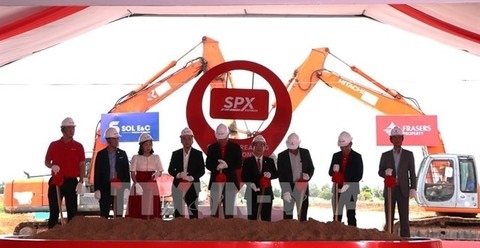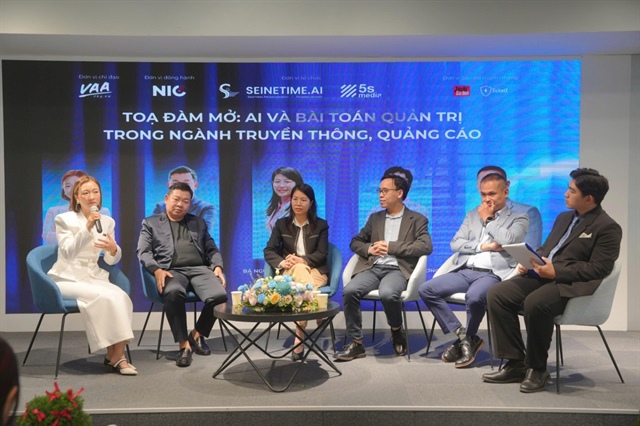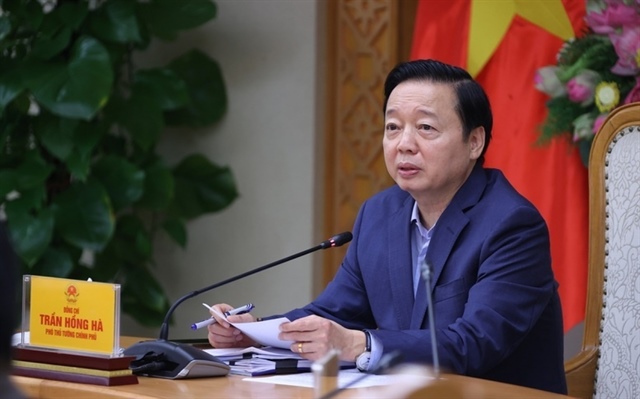Garment companies expect to perform better in 2017
Garment companies expect to perform better in 2017
Garment corporations expect to earn more through improved production and increased exports, hope to attract investments and go ahead with their expansion plans in 2017.

The Ha Noi Textile Garment Company (Hanosimex) has targeted a 10 per cent increase in revenue this year compared to 2016.
Nguyen Song Hai, general director of Hanosimex, said the company aimed a revenue of between VND2.8 trillion (US$123 million) and VND3 trillion, higher than last year’s VNĐ 2.7 trillion, with a profit of around VND75 billion.
To achieve this, Hanosimex must make significant changes to increase labour productivity and earn a free-on-board (FOB) export value of more than 50 per cent of the company’s total export, Hải said.
Hanosimex will focus on improving quality, determining its traditional customers and taking steps to develop new markets. Hai said the company would constantly study and improve product designs to suit the tastes of its consumers.
In 2016, because of difficulties in the world market, the export value of Việt Nam’s textile and garment industry touched only US$28.3 billion. However, Hanosimex met its assigned target and had encouraging achievements, Hải said. Despite everything, the company’s revenue in 2016 rose by 11.3 per cent compared to 2015 and profit reached VND74 billion, up 31.4 per cent year-on-year.
Meanwhile, the Việt Tiến Garment Joint Stock Corporation (VGG) aims to make $1 billion in exports by 2020, with an average growth rate of 15 per cent a year, its general director Bui Van Tien said.
In 2017, Tien said, VGG would focus on its ongoing investment projects, increase production at the local level, invest in automation technology and apply innovative production technologies to improve labour productivity and the quality of its products, especially using lean manufacturing tools designed to improve workplace efficiency.
The company will also endeavour to improve its work environment, better the living standards of its workers, develop distribution channels system and boost its image and brand, Tiến said, adding that the goal is to transform VGG into a multinational economic group over the next 40 to 60 years.
In 2016, the company’s revenue touched VND12.6 trillion, up 12 per cent year-on-year, while its pre-tax profit reached VND664 billion, up 4 per cent against 2015. Its export turnover was around $700 million, of which the Japanese market accounted for 32 per cent, the US 22 per cent and the EU 18 per cent.
The average monthly income of its workers was VND8.8 million, a five per cent year-on-year increase.
Meanwhile, the Pho Noi Textile and Garment Infrastructure Development Joint Stock Company, an investor in the Pho Noi textile industrial park (IP) in the northern Hung Yen Province, has announced that it would arrange for funds to complete its infrastructure system and develop the remaining area of the IP.
The company’s general director Nguyuen Hai Ha said it would implement professional services and utilities for investors, such as workers’ housing, customs service, offices for lease, commercial services, entertainment, child care and cultural and sports activities.
The company will also increase its water supply and drainage systems to the IP and collaborate with the municipal wastewater treatment centre and electricity providers to ensure the smooth operation of Pho Noi IP.
In 2017, the company will focus on improving development, strengthening its investment promotion programme, attracting investments for expansion of local production and seeking new customers.
Last year, the company pushed up its international integration, which was possible because of the various bilateral and multilateral free trade agreements, and the Government’s determination to improve the business environment. However, attracting investments remains a major challenge when the market offers many other attractive options. Besides, standards and regulations for environmental protection have been tightened, Ha said.
By the end of 2016, 80 per cent of Pho Noi IP’s infrastructure development was complete and its occupancy rate in Phase 2 had risen to 70 per cent from 35 per cent in 2015, with many investors from the US, the Republic of Korea and Hong Kong coming in.
Most investors have started the construction of their plants as soon as they got possession of the land, Ha said.






















